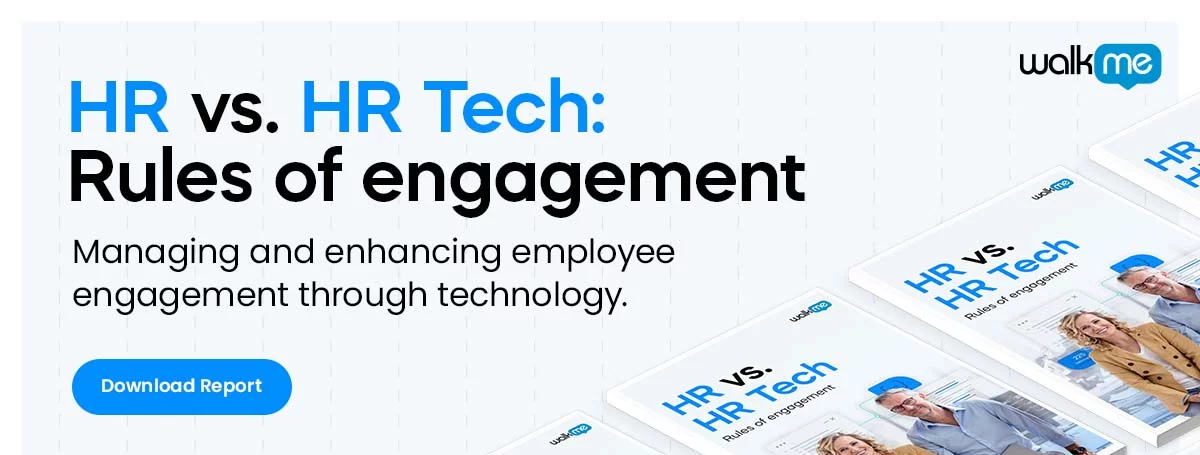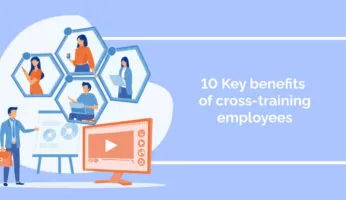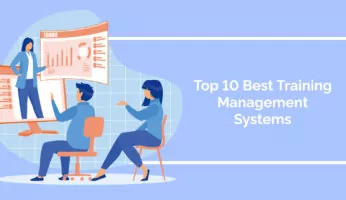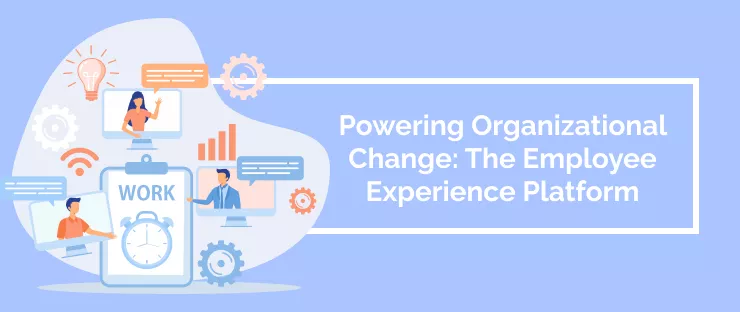
An employee experience platform (EXP) is a great way to manage employee engagement in an organization. By providing tools for keeping staff motivated and satisfied, EXPs support a company’s business outcomes.
Organizational change is one of the biggest challenges facing today’s companies. Employee engagement is key to your success, whether undergoing a merger or acquisition, shifting to new leadership, implementing new technology, or making wholesale changes. That’s where an EXP comes in.
An EXP is a comprehensive tool that helps businesses manage and measure all aspects of their employees’ experiences. It can track employee satisfaction, organizational change, and other metrics to help companies stay ahead of the curve.
By providing employees with real-time feedback on progress and giving them the tools they need to succeed, an EXP is a powerful way for businesses to improve their business outcomes. Change management teams can use the platform to identify areas where the company is struggling and work with leadership to implement changes that will drive innovation and growth.
Employee feedback has been taken seriously by businesses for decades. Before the digital age, annual surveys and long review processes informed big business decisions. But now, the digital employee experience platform has emerged as a fantastic way to make that process far more accessible and comprehensive.
In this article, we’ll examine what an employee experience platform is, how it can support change in organizations of any size, and how the market is changing for HR and ERP software vendors.
What Is An Employee Experience Platform?
A recent Gartner HR report defined Employee Experience as “the interactions employees have throughout all touchpoints in their day-to-day work and the contexts that influence those interactions.”
In simple terms, employee experience management tracks the nature of the work that employees do and the environments in which they do it. A complete overview of employee experience considers workload, job satisfaction, employee relationships, social issues, and more.
Keeping employees engaged has many benefits, including enhanced productivity, high customer satisfaction, lower staff turnover, and higher revenue. So it makes sense to monitor employee experience and make appropriate changes.
This is where EXPs come into the picture. Gartner reports that only 6% of relevant executives feel capable of addressing decreases in employee satisfaction levels. A digital solution does all the work of traditional methods, such as taking surveys, creating employee personas, and mapping employee journeys. On top of that, they offer real-time data to support targeted interventions.
Core Components Of An Employee Experience Platform

The current generation of employee experience platforms operates in various ways. A suite like Microsoft’s Viva works through integrations with applications. Others will be a stand-alone system.
While all commercial platforms will offer slightly different solutions, the following features are common to most of them.
Onboarding Hubs
The first day of work is the best time to produce highly engaged employees. The employee experience platform can take care of some of this work. An easy-to-use platform can present clear to-do lists, links to organizational structures, and set initial performance objectives. Starting a new job can be stressful. Using a well-provisioned EXP ensures a purposeful start.
Visual Planning
It’s tough to keep track of a whole team. An employee experience platform’s visual planning tools can support careful project management in a workplace. Employee engagement can improve if a fair and reasonable workload is part of the company culture.
Enhanced Performance Tracking & Management
Performance reviews should never be a punishment. Setting targets and measuring their results helps to ensure that staff knows what success looks like for that employee. Managers can use enhanced tracking methods to find informal check-ins and employee recognition opportunities.
Integration With Collaborative Tools
Some tools integrate seamlessly with collaborative working platforms like Microsoft Teams and Slack. When employees experience engagement surveys in their everyday workspaces, it’s far more likely that they will respond positively.
360-Degree Review Process
Employee engagement platforms gather employee feedback from every direction. Each connection between an employee and another staff member in a company can provide helpful information. This information offers employees reliable feedback and developmental goals, helping managers improve their work.
Culture Mapping
Culture mapping is a valuable approach to take before any change management project. By mapping a company’s culture, HR leaders can understand where they will find support for a change, where they will find resistance, and what work they need to do to make the change effective.
With an ERP, culture mapping can be highly granular and accurate.
Intranet Software Solutions
Before the cloud changed everything we do, a local intranet was one of the top solutions for staff engaging with one another in a professional capacity. Many EXPs can now provide the communicative functions that the intranet once had.
What Is The Digital Employee Experience?

The digital employee experience is connected to an organization’s overall digital strategy and approach to digital transformation, with employee experience management being a key component of digital transformation success.
Challenges to a positive digital employee experience span the organizational spectrum and include everything from insufficient budgets for technology upgrades and training to outdated software that is slow, clunky, or doesn’t have access to key data.
Employees can be significant drivers or inhibitors of digital change in a company. Businesses that track employee engagement with technology will have excellent data for improving efficiency, future implementations, and offering training.
Employers should regularly collect data on employee engagement, including feedback through surveys, focus groups, and more. Organizations that harness data by tracking the digital employee experience can better understand employees’ needs and motivations, which can help them create a more positive digital transformation initiative.
It doesn’t matter how powerful a software solution is. If it includes a poor user experience, it won’t be used to the max.
How Do Employee Experience Platforms Power Organizational Change Through Employee Engagement?
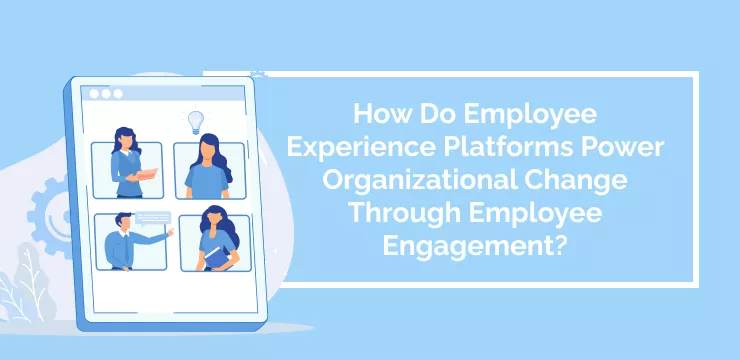
Organizational change projects are particularly crucial for enhancing employee engagement. After all, even the most dedicated and motivated employees can feel demoralized when they don’t understand the improvements around them.
An EXP can help create a positive company culture of communication and feedback. An employee experience platform can provide real-time insights into what’s going well and wrong. Managers can arrange interventions for individuals, demographics, or business units even when an implementation project is underway.
The Transformation of HR Technology Architecture
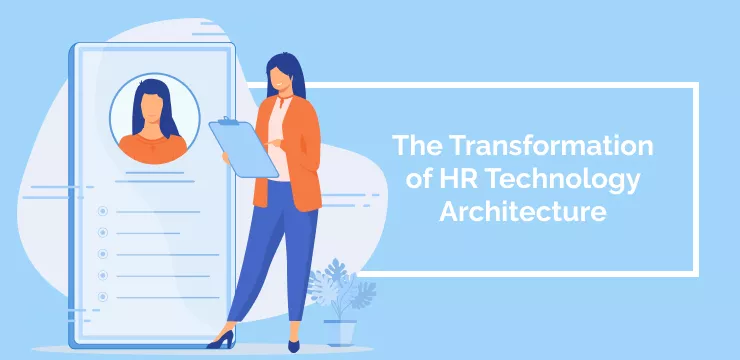
HR technology solutions can sometimes involve many different apps. Small software tools may separately deal with onboarding, performance management, surveys, rewards, and all the other little jobs that the HR department has to cover.
In many ways, this is not an ideal model. Even if the small apps can provide high functionality, multiple logins, interfaces, and licenses can all create the full adoption of the service.
Modern digital solutions for strategic human resources can offer one package that covers all needs, with the adaptability to suit different sizes of businesses. Simplifying so many processes will inevitably lead to greater engagement and take-up.
Lack of integration between apps can lead to data silos and various inefficiencies. One of the biggest problems with HR technology is that it often doesn’t keep up with the changing business environment. As companies adapt and grow, their HR needs become more complex, requiring new features and functionality from their software. This means that constantly updating or replacing existing HR tech can be both expensive and time-consuming.
One solution to these challenges is adopting a digital transformation strategy for HR technology architecture. This involves building a centralized system that integrates all key functions of HR into one cohesive platform. This not only streamlines processes and makes data more accessible, but it also allows companies to scale quickly as they grow.
There are several key benefits to implementing a digital transformation strategy for HR tech architecture, including increased data visibility and accuracy, more effective integration of systems, and lower total cost of ownership. If you’re looking to modernize your HR technology system, you must partner with a vendor who can help you implement this strategy successfully.
With the right partner, you can confidently take on the challenges of HR technology and achieve greater success in the digital age.
What’s Next For ERP Vendors?
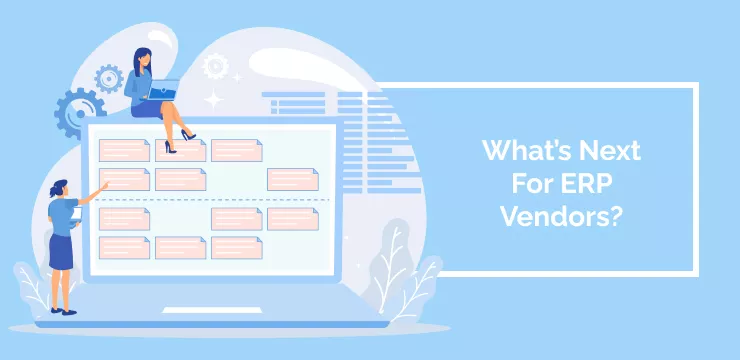
The top vendors of Enterprise Resource Planning software (ERP) now offer an employee experience platform as part of their business. This means that major vendors can be trusted with the success of employee experience. A package like SAP SuccessFactors will connect very well with other digital infrastructures.
One of the biggest ERP adoption challenges facing vendors today is integrating their products with emerging technologies. While some enterprises are currently using digital solutions to increase productivity, improve communication and streamline processes, many companies have yet to take full advantage of new technology. As these gaps become more apparent, ERP vendors will need to find ways to bridge the gap between their products and emerging technologies.
Another challenge that ERP vendors face is attracting and retaining talent. As technology evolves, companies will need to work harder than ever to attract top talent in highly competitive markets. They will also need to ensure that their employees feel supported and motivated so that they can continue building innovative solutions.
ERP vendors must continue innovating to stay relevant in a rapidly changing business landscape. By integrating their products with emerging technologies and attracting top talent, these vendors can help businesses worldwide make the most of digital solutions and drive long-term success.
The Evolution of The HR Market
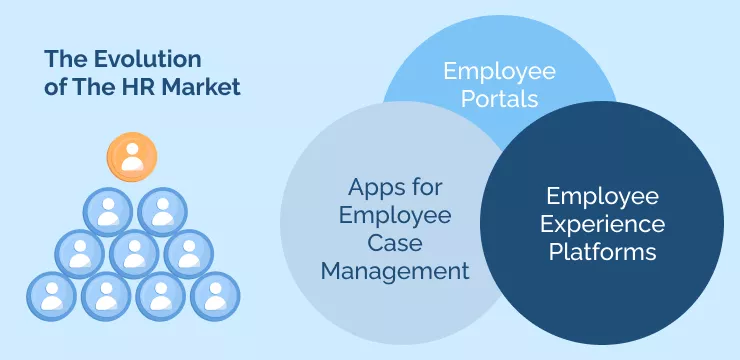
Before the Covid pandemic pushed many business services online, the Employee Experience Platform became a buzzword early in 2020. But EXPs are just one of the ways that the HR market has undergone a major transformation in the past two decades.
In the past, inquiries would be dealt with in person. Staff handled their queries by visiting the HR office, picking up the phone, or sending an email.
Now, the software takes care of much of the routine staff care. Cloud technology means that most documents can be accessed instantly. HR staff is still essential to the smooth running of an organization. But they are now free to deal with the complex issues that may arise.
Furthermore, the market for HR staff and software has broadened its scope. HR is more about improving business outcomes by helping employees feel connected throughout their company.
As technology continues to develop through self-service resources, employee migration, cloud migration, and consolidation of functions, the following three areas will be hot topics.
Employee Portals
The HR portal is a one-stop service center for most routine needs. Employees can access pay slips, salary information, and guidance on common problems. Logging tickets for the HR team can deal with further issues.
Portals offer a far superior experience for simple inquiries at any company with many complex staff structures. Portal technology can single-handedly improve employee engagement.
Apps for Employee Case Management
When employees have further requirements, a case management system ensures they are handled efficiently. Case management makes sure that a request is logged, makes it to the relevant teams, and
Employee Experience Platforms
EXPs have now emerged as a valuable technology alongside other new tools. Why are they so valuable? A McKinsey overview of current employee experience priorities suggests that “adapting approaches based on individual employee needs and experiences” is now essential. Systematic data collection is one of the best ways to understand workers’ continually changing needs.
How Has The Service Delivery Model Changed?
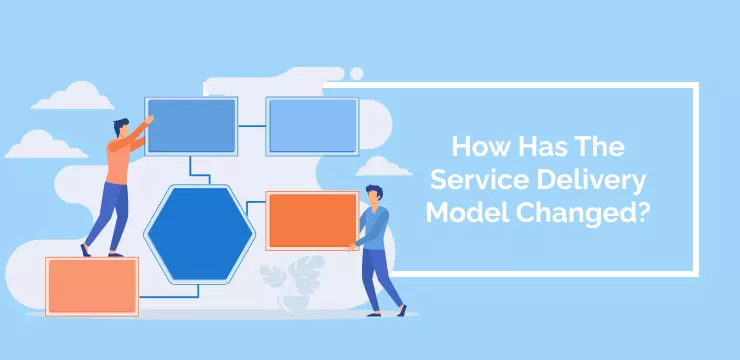
As software vendors continue to develop apps to make work more effective, the service delivery model for HR programs has changed dramatically. In an older system, HR teams in one space dealt with requests on a request-by-request basis.
Now, it’s organized around different tiers of service. Users begin with an online single HCM system, proceeding to the general staff, and only later getting to specialized staff.
The changes in service delivery have many benefits. They mean that routine operations can now be more efficiently performed. But on the downside, niche inquiries may take a long time to be resolved.
Given these challenges, HR teams need to be creative in approaching support. They may need to consider outsourcing specific tasks or partnering with vendors to help develop a more seamless service model. Ultimately, the key is finding ways to balance efficiency and effectiveness so that employees can get the support they need to do their best work.
Overall, the changes in service delivery have been positive for HR teams and employees alike. By continuously monitoring the needs of your workforce and developing strategies to address them, you can create a streamlined system that gives everyone what they need to succeed.
As software vendors continue to develop apps to make work more effective, the service delivery model for HR programs has changed significantly. In the past, HR teams in one space handled requests on a case-by-case basis.
Today, organizations typically have tiers of service that users move through as they grow more familiar with the HCM system. Individuals begin by using the software’s basic functionality, then move on to general staff support, and finally, get access to specialized HR staff.
How To Develop An Employee Experience Strategy
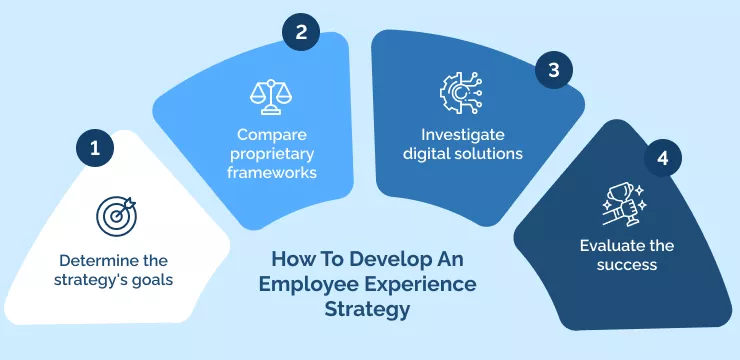
A highly effective employee experience solution does not happen by accident. The following offer a guide to achieving business value by embedding employee experience in a company.
Determine the strategy’s goals
Positive employee experiences can lead to distinct positive outcomes for a business. So, deciding on the priorities for the next few years is essential. Is it more important that the company retain top talent or improve the efficiency of its processes?
Compare proprietary frameworks
Some consulting companies have already developed employee experience frameworks to inform the strategy. For example, Gallup’s framework addresses seven different areas in the employee lifecycle.
Investigate digital solutions
Some companies choose not to use an employee experience platform. However, as this post has suggested, EXPs can help take a lot of weight off the shoulders of staff. EXPs can provide solutions for companies of any size. The largest players include IBM, Deloitte, and SAP, while smaller outfits like Glint, SurveySparrow, and PxidaX offer more niche services.
Evaluate the success
Without a thorough evaluation process, either internally or using HR consultants, no process is complete.
What Gartner’s Employee Experience Research Means For The Future Of Business
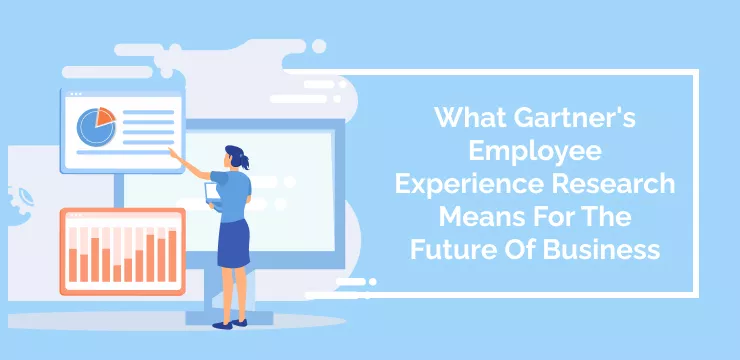
Gartner provides vital insights into global changes in employee experience. As they report that “only 13% of employees are fully satisfied with their experience”, it’s clear that there is plenty of work to do in the area.
One of their research-informed techniques is the concept of “moments that matter.” “Moments that matter” are the most crucial events for company workers.
Every company should define its moments. Some of them are likely to be negative. If they experience discrimination, miss a promotion, or experience conflict, most employees would remember. However, positive experiences can also “matter,” such as welcoming new hires, getting a promotion, or getting a better schedule.
“Moments that matter” varies by region, generation, gender, status, and race. They are not an unchangeable metric of success. But they can be vital in creating an employee experience strategy that puts workers at the very center. Instead of considering processes, moments that matter help to focus managerial action on the human experiences that make a difference.
Listen To Employee Feedback To Enhance Business Value
In this era of HR, employee experiences may be treated more like customer experiences in the past. Increasingly, the employee journey plays a vital role in business results. Simple acts of employee recognition and more profound opportunities for career growth can play their part in hanging on to staff, making processes efficient, and achieving more revenue.
Taking the necessary steps to improve employee engagement and gain deeper insights into employees’ needs will pay off in the long run. Companies that do so will be aware of inefficiencies, avoid high employee turnover, and find that they can manage change far more efficiently.
Emerging technologies for digital transformation have a vital role to play in the future of employee experience.
WalkMe Team
WalkMe spearheaded the Digital Adoption Platform (DAP) for associations to use the maximum capacity of their advanced resources. Utilizing man-made consciousness, AI, and context-oriented direction, WalkMe adds a powerful UI layer to raise the computerized proficiency, everything being equal.
